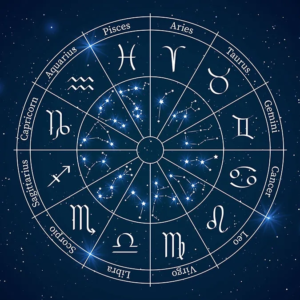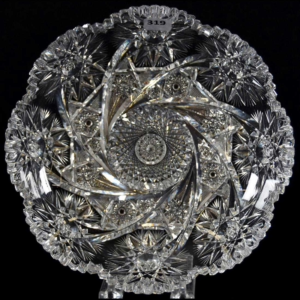Fulgurite stone – properties, virtues & benefits
Fulgurite Stone: discover this fascinating mineral formation created by the fusion of sand under the impact of lightning, combining natural beauty and electrical power. A unique phenomenon to explore!
FULGURITE CHARACTERISTICS
- Chakra: Root.
- Properties: Protection, energy, anchoring.
- Astrology: Uranus.
- Zodiac: Aquarius, Taurus.
- Elements: Earth, Air.
- Colors: Black, brown, dark green.
- Hardness: 6-7 (Mohs scale).
- Chemical Formula: SiO2 (silicon dioxide).
- Associated god: Thor (Nordic).
FULGURITE – ITS HISTORY
German pastor David Hermann officially discovered fulgurite in 1706. However, it wasn’t until another century later that Dr. Hentzen identified the true cause of those mysterious tubes found in the dunes of Germany’s Sennerheide. Hentzen’s research revealed that fulgurite is in fact a trace left on the earth by lightning.
When lightning strikes the ground, which is mainly sandy, it produces heat and energy that raise the temperature of the sand to several thousand degrees Celsius. This sudden increase in heat and energy causes the original material to transform into amorphous Pieces of silica which, once cooled, take on the shape of rough cylindrical tubes. Since this phenomenon is highly random, fulgurites can vary in size, shape, texture and color depending on where the lightning strikes. Fulgurites are often called “petrified lightning” or “fossilized lightning” because of their lightning origin. Their name, “fulgurite”, comes from the Latin “fulgur”, meaning “lightning”.
In lithotherapy, fulgurite stone is known for its powerful protective powers and symbolizes physical strength and mental balance. As its discovery is fairly recent from a historical point of view, few legends are associated with this stone.
FULGURITE STONE – ITS ORIGIN AND COMPOSITION
Fulgurite stone is formed from a mixture of sand, rock, earth, sediment and organic debris that have melted under the impact of lightning. This phenomenon often occurs in sandy soils and sometimes around trees, from a scientific point of view.
Visually, fulgurite stone is hollow with a rough outer surface and a smooth, shiny interior. Its shape can vary considerably depending on the power of the lightning and the type of ground affected. To date, the largest fulgurite discovered was 4.9 metres long.

FULGURITE – VERTUS ET PROPRIÉTÉS
PSYCHOLOGICAL FULGURITY
The fulgurite stone is used in lithotherapy to promote sPiritual awakening, open-mindedness and connection between Earth and cosmos. This stone is intimately linked to the coronal chakra and allows you to connect your sPirit to the universe while remaining grounded to the earth. By promoting grounding and sPirituality, the stone can help you meditate more intensely and reflect with full awareness.
PHYSICAL FULGURITY
Fulgurite stone, which comes directly from lightning, is beneficial on the physical plane. It is often used in meditation or reiki to balance the electromagnetic field and align the chakras, promoting physical well-being, relaxation, strength and vitality.
If you’re sensitive to electromagnetic waves and suffer from headaches, stomach or back pain, wearing a fulgurite stone can help alleviate these symptoms. In general, this stone helps to eliminate negative energies and rebalance the whole body.
SPIRITUAL FULGURITY
Fulgurite stone is linked to the coronal chakra, also known as Sahasrara, on the sPiritual plane. Located at the top of the head, this chakra opens upwards and allows access to celestial energies. Considered the center of sPirituality, the coronal chakra keeps us connected to the universe around us.

FULGURITE STONE – ASSOCIATIONS
The stones that complement fulgurite best are those that act on the coronal chakra, such as amethyst, rock crystal and milky quartz. They’re perfect for amplifying fulgurite stone’s powers of protection, sPiritual awakening and grounding.
When it comes to materials, you can choose from a wide range of options, as fulgurite is a neutral stone that can be worn with warm or cool tones. Its earthy, sandy color works well with white gold, yellow gold or silver jewelry.
FULGURITE STONE – CLEAN AND RECHARGE
The fulgurite stone requires little maintenance and purification is not mandatory, but it is recommended to use a gentle method such as incense fumigation to preserve its beauty and eliminate negative energies accumulated during its use.
The process of recharging the fulgurite stone is simple. Simply expose it to the sun or moon for a few hours, preferably on a quartz cluster. Performed with care and caution, this ritual restores the stone’s energy as it was on the first day.
WHERE DOES THE NAME FULGURITE COME FROM?
The name “fulgurite” comes from the Latin “fulgur”, meaning “lightning”. The name refers to the way these stones are formed, i.e. by the fusion of sand or rock under the impact of a lightning bolt. When lightning strikes the ground, the extreme heat causes the materials to fuse, creating glassy, tubular structures known as fulgurites.
.
WHICH CHAKRA DOES FULGURITE ACT ON?
Fulgurite acts primarily on the root chakra, also known as Muladhara. This chakra is located at the base of the sPine and is associated with anchoring, stability, security and basic needs. The fulgurite stone helps to strengthen the connection with the Earth, balance energies and promote a sense of security and protection.
WHICH ASTROLOGICAL SIGN IS ASSOCIATED WITH FULGURITY?
Fulgurite is particularly associated with the signs Aquarius and Taurus. Aquarius, ruled by the planet Uranus, is an Air sign that values independence, innovation and intuition. Fulgurite can help channel these qualities while providing an energetic anchor. Taurus, an Earth sign, is renowned for its perseverance, stability and connection with nature. Fulgurite reinforces these aspects by helPing to maintain a strong connection with the Earth and encouraging protection and balance.
FULGURITY STONE SUMMARY
Fulgurite stone is a type of natural glass, usually tubular, created when lightning strikes sandy soil or other silica-rich material. The extreme heat of lightning (up to 30,000°C) melts and vitrifies the sand grains, forming hollow tubes or solid structures with complex shapes. Fulgurites are often called “lightning stones” and are of both scientific and aesthetic interest.
Fulgurites are found mainly in deserts, beaches and sandy areas, where soils are rich in silica. They can also form in clayey soils and sedimentary rocks. Fulgurites can vary in size, color and appearance, depending on the conditions and materials present at the time of their formation.
As well as being collectors’ items and decorative elements, fulgurites also have scientific applications. They enable researchers to better understand the electrical and thermal properties of lightning, as well as the meteorological and geological conditions that influence the formation of these unique structures. Fulgurites can also offer insight into the history of lightning on Earth, by studying the frequency and distribution of lightning strikes over time.

